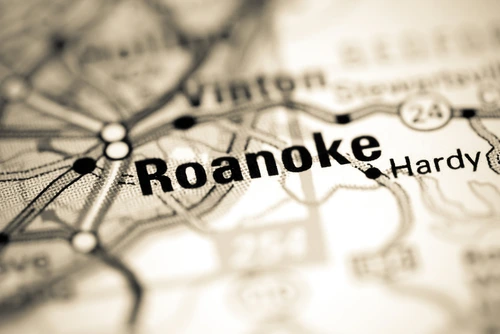
In the late 16th century, Queen Elizabeth I was stuck with a major dilemma. Despite other European countries like Spain and Portugal colonising parts of the New World – aka the entire Western Hemisphere – she was struggling to crack settling in North America.

These other countries were decades ahead. The only attempt England has made is sending an expedition led by Sir Humphrey Gilbert to colonise a bit of St John’s in Newfoundland. He drowned.
Gilbert’s half-brother, Sir Walter Raleigh, was keen to take up his late sibling’s glory and took his charter and colonised a bit of coastal America. Rather than going north (Canada) he’ll take a stab at the warmer middle bit (the American east coast).
What could possibly go wrong?
As it turns out, the answer to that question was everything.
On 4 July 1584, exactly 192 years before America would mark its independence from Great Britain, Raleigh’s crew landed on Roanoke Island, in what is now North Carolina. Three years later, after deeming it viable for settlement, Raleigh dispatched a group of 115 people to the New World who settled in and founded the colony of Roanoke. He sent with them a personal friend who had been on a previous expedition to Roanoke, John White, who became the governor of the colony.
Governor White was fairly well-liked, the colony settled relatively quickly, and everything seemed to be going fine and dandy. That was until the colonists began to have some frequent, not-so-friendly run-ins with the local Native American tribe, the Croatoans. The final straw was when one of the colonists went out alone searching for crabs and was killed by a native. The colonists begged Governor White to head back to England to get some extra help for the colony. He left in 1588.
His return was delayed by another unlucky twist: a rather inconvenient war with Spain. When he finally managed to get back to Roanoke in 1590, he was flabbergasted by what he found: a deserted colony without a single trace of where the colonists had gone, or even, really, that they had been there at all. The only clue was the words ‘CROATOAN’ carved into a fence post, and ‘CRO’ carved into a tree.
Everyone, and everything, had completely disappeared.
In the centuries since, no one has been able to discover what actually happened to these disappearing settlers conclusively. Today, we don’t have a single clue as to what went on in those two years that John White left the colony.
However, thanks to a combination of human nature and the internet, a number of theories have emerged.

They integrated with the Croatoan tribe
Many historians have hypothesised that the settlers just adopted the Native American lifestyle after their governor failed to return.
This is plausible, to a degree: despite the bouts of fighting, many of the colonists got on well with the Croatoan tribe. This would explain the markings on the tree and fence post and the lack of evidence of violence in the empty settlement.
They were murdered by the Spanish
Due to the raging war between England and Spain at the time, it’s feasible to think the Spanish went and wreaked havoc on England’s first and only settlement in North America. Spanish troops were in Florida at the time of Roanoke and could have made a special pilgrimage to destroy the precious colony.
They were murdered by the Native Americans
The tree engraving, the mass disappearance, the previous altercations… The idea that the Croatoan tribe killed the Roanoke colonists is not a crazy one. The challenges with this theory lie in the lack of any trace – no bones, no blood – that might indicate a murderous attack broke out.
In the 1930s, evidence that seemed to support this theory was discovered, when a farmer found a set of marked stones that looked to be messages from the colonists. The Dare stones – named for John White’s daughter Eleanor Dare, who was presumed to have left them – were addressed to John White to tell him what had become of the colony. They said, essentially, that all but seven settlers were killed by ‘savages’; the rest had fled.
By 1941, a journalist had discovered that they were forgeries. The theory they present is still widely believed to be the true story of what happened to the Roanoke colonists.
They just left
After their governor left saying he’d bring back help and then didn’t return, one of the more feasible theories argues that the settlers of Roanoke abandoned the colony – and disappeared into the wilderness.
What actually happened to England’s first American colony? Who’s to say. All we can say for sure is that this is a piece of 4 July history you won’t be hearing Americans bringing up too much today.
[Read more: British cities face a long overdue reckoning with racist monuments]






